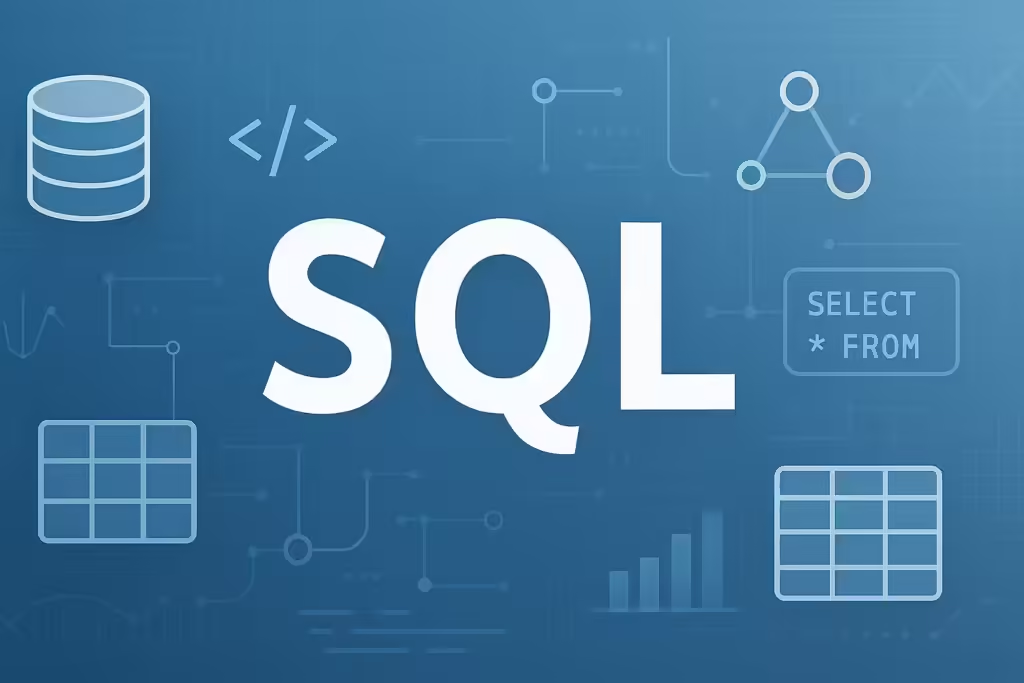Table of Contents
Introduction
Structured Query Language, or SQL (pronounced “ess-cue-el” or sometimes “sequel”), is the standard language used to communicate with relational databases. Whether you’re managing data in a corporate environment or powering analytics in a web application, SQL is a fundamental skill in the data world.

What is SQL?
SQL is a domain-specific language designed for managing, querying, and manipulating relational databases. It allows users to access and control data efficiently using a standardized syntax across various database platforms like MySQL, PostgreSQL, Oracle, SQL Server, and SQLite.
At its core, SQL enables operations such as:
- Creating and modifying database structures
- Inserting, updating, and deleting data
- Querying datasets using complex conditions
- Managing permissions and transactions
History and Evolution
SQL originated in the early 1970s at IBM, where Donald D. Chamberlin and Raymond F. Boyce developed SEQUEL (Structured English Query Language) for manipulating and retrieving data stored in IBM’s System R. Later renamed SQL, the language became standardized by the American National Standards Institute (ANSI) in 1986 and the International Organization for Standardization (ISO) in 1987.
Since then, SQL has evolved with multiple versions of the standard. Different database systems implement extensions, but the core syntax remains consistent.
Importance in Data Management
SQL plays a pivotal role in data management and analytics:
- Universality: It’s supported by nearly every relational database system.
- Declarative Nature: You specify what you want, not how to get it.
- Scalability: From small projects to enterprise-level systems.
- Foundation for BI and Data Science: Analysts and data scientists rely on SQL for data preparation and exploration.
SQL is the language that bridges the gap between raw data storage and actionable insights.
SQL vs NoSQL
While SQL is used for relational databases with structured schemas, NoSQL databases are designed for flexibility, scalability, and performance, often used in big data and real-time applications. Here’s a quick comparison:
| Feature | SQL (Relational) | NoSQL (Non-Relational) |
|---|---|---|
| Schema | Fixed and Predefined | Dynamic or Schema-less |
| Data Format | Tables with rows and columns | JSON, XML, Key-Value, Graph |
| Query Language | SQL | Varies by system (MongoDB uses BSON) |
| Use Cases | Banking, ERP, CRM | IoT, social media, content management |
Despite their differences, both SQL and NoSQL are valuable depending on the use case. SQL remains dominant in transactional systems where data integrity and relationships are critical.
Basic SQL Syntax Overview
Here’s a glimpse of standard SQL syntax:
-- Creating a table
CREATE TABLE Employees (
ID INT PRIMARY KEY,
Name VARCHAR(100),
Department VARCHAR(50),
Salary DECIMAL(10,2)
);
-- Inserting data
INSERT INTO Employees (ID, Name, Department, Salary)
VALUES (1, 'John Doe', 'HR', 55000.00);
-- Querying data
SELECT Name, Salary FROM Employees WHERE Department = 'HR';
This example demonstrates how SQL uses simple English-like statements to perform powerful operations on databases.
In the next chapter, we’ll explore core database concepts including what defines a database, how data is organized, and the importance of keys and constraints.
